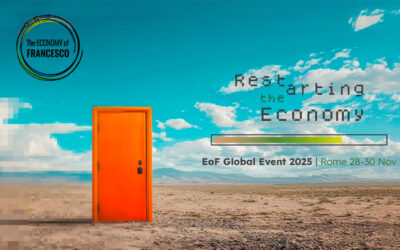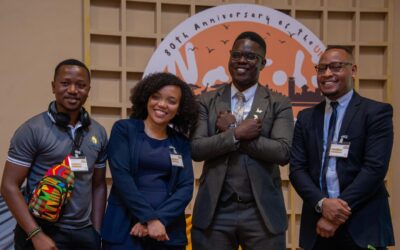 On a sunny 9 June the “Clare of Assisi and Chiara Lubich Meeting: two charisms in communion” occured, It was an event that was meant to to add something to the Clarion Year which recalls the 8th centenary of Clare of Assisi’s conversioin and consecration to God. And it was also meant to attest to the timeliness of Clare’s appeal still today. Hence the desire to deepen the relationship, or better the communion between the charism of Clare of Assisi and Chiara Lubich.
On a sunny 9 June the “Clare of Assisi and Chiara Lubich Meeting: two charisms in communion” occured, It was an event that was meant to to add something to the Clarion Year which recalls the 8th centenary of Clare of Assisi’s conversioin and consecration to God. And it was also meant to attest to the timeliness of Clare’s appeal still today. Hence the desire to deepen the relationship, or better the communion between the charism of Clare of Assisi and Chiara Lubich.
There was a very interesting panel discussion introduced by Mayor Claudio Ricci and the Archbishop of Assisi, Domenico Sorrentino, a variation on a theme in many voices. Professor P. Peter Maranesi, OFM Cap offered a passionate reflection on “Francis and Clare: One Charism, Two Faces,” dealing with its prophetic and revolutionary dimensions that challenged the customs of an era. He also underscored the disruptive innovation of categories such as “mercy” and “sharing” that emerged from Francis’ “conversion”.
He spoke of the spiritual journey of Clare who discovered her identity in the “countenance” of Francis: “… without that face I would have no face. I found God through him. “Theirs was a prophetic opening that led medieval society to discover the person as a way to reach God. The same thing but in different times, has been accomplished through Chiara Lubich. This was discussed by Professor Sister Alessandra Smerilli, F.M.A. in her “Charisms reflected in history and in society”. Charisms are not only “freely-given graces”, but they are “eyes through which those who live in disadvantage see something beautiful and great.” Then these charisms become “bulldozers that open new frontiers, pushing back the stakes” of research and involvement.
 Moreover, charisms are means for the emergence of the feminine. So it was for these two Clares: Clare of Assisi was able to receive approval for her “Highest Poverty” by the Holy See. Clare (Chiara) of Trent introduced into the Church the great novelty that the president of an ecclesial movement, containing all the vocations, will always be a woman. The accomplishments of Chiara Lubich’s charism are exquisitely secular (like the Economy of Communion), showing how much the charisms of the past and present are like the flywheels, that gradually lead us to a society that is more “humane and beautiful”.
Moreover, charisms are means for the emergence of the feminine. So it was for these two Clares: Clare of Assisi was able to receive approval for her “Highest Poverty” by the Holy See. Clare (Chiara) of Trent introduced into the Church the great novelty that the president of an ecclesial movement, containing all the vocations, will always be a woman. The accomplishments of Chiara Lubich’s charism are exquisitely secular (like the Economy of Communion), showing how much the charisms of the past and present are like the flywheels, that gradually lead us to a society that is more “humane and beautiful”.
Asthetics and beauty are inherent to the action of a charism. “Chiara of Assisi and Chiara Lubich: the Communion between Two Charisms as a Source of Light” was the theme of the presentation given by Lucia Abignente from the Focolare Movement. The relationship between these two great woman is contained in what Chiara Lubich envisioned in the charisms: a variety of flowers in the garden of the Church. Their unfolding, in unison and in response to the needs of the times, is a progressive flowering of the Word: “Christ unfolded” in time and in space.
“Holy unity and highest poverty” is the charism belonging to the first; “Unity, which has as its key the exclusive love for Jesus Forsaken”, belongs to the second.
The profound communion among the charisms of the two Clares summons us to live with faithfulness their message today.
 “Clare”, “claritas”, “clarify”, words that in the jargon coined by Chiara Lubich are an invitation to inject the light of the spiritual realm into the temporal realm. This was the belief which led, during the second act, the dedication of a large street next to the Superior Basilica of St. Francis, to Chiara Lubich, in order to remind us to “widen our vision”, as the moderator of the round table discussion reminded everyone. In giving his blessing to “Largo Chiara Lubich” Archbishop Sorrentino wished that it should be a “a reminder, a call to people everywhere to consider the streets of the world as places of encounter and dialogue with all.” And Mayor Ricci saw in this “the cobblestones of Assisi, cradle of Franciscanism, coated now in another charism whose style is being family, with economic and social implications.
“Clare”, “claritas”, “clarify”, words that in the jargon coined by Chiara Lubich are an invitation to inject the light of the spiritual realm into the temporal realm. This was the belief which led, during the second act, the dedication of a large street next to the Superior Basilica of St. Francis, to Chiara Lubich, in order to remind us to “widen our vision”, as the moderator of the round table discussion reminded everyone. In giving his blessing to “Largo Chiara Lubich” Archbishop Sorrentino wished that it should be a “a reminder, a call to people everywhere to consider the streets of the world as places of encounter and dialogue with all.” And Mayor Ricci saw in this “the cobblestones of Assisi, cradle of Franciscanism, coated now in another charism whose style is being family, with economic and social implications.
The day concluded at Metastasio Theatre with the Musical “Clare of God” by Carlo Tedeschi, a lively journey of music, rhythm and dance based on the life of Clare of Assisi and performed by a dance company of young people who were living witnesses of what they performed.
By Victoria Gomez




0 Comments